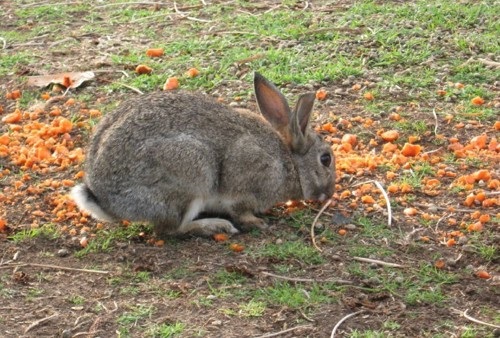Baiting is the preferred method to significantly reduce pest animal numbers prior to implementing other control methods. There are strict requirements governing the use, supply and management of baits in Victoria.
1080 (sodium monofluoroacetate)
This is considered the most effective method of rabbit control currently available. However, not all poisons are humane and non-target animals can also be exposed to poisons.
1080 bait products are subject to regulatory control in Victoria and require a specific permit and endorsement for use. Native animals have a tolerance to 1080 which reduces the likelihood of off-target native animal fatalities.
There is no known antidote to 1080 poisoning.
Pindone
Pindone is often used where 1080 is either impractical or unsuitable. This is because of the delayed onset of pindone poisoning, and because there is an effective antidote (vitamin K1), which is not the case for 1080.
Pindone is a more appropriate bait for urban environments.
